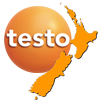
Digital food safety is undoubtedly the future of meeting standards. Through the use of the right technology, business owners are able to achieve the highest possible inspection scores as well as drive operational efficiency. In this blog, we will explore the advantages of converting your food safety system to a completely digital process. We will explore the options for the food industry, from the production level to the retail and restaurant industry.
Digital food safety uses the latest technology to digitise food safety practices that would have been performed manually in the past. This is usually executed through a centralised software solution. Analogue food safety systems are vulnerable to human error that is potentially dangerous for the food business and its customers. Here are just a few of the industries that can benefit from digital good safety technology.
- Restaurants and catering
- Food production
- Beverage industry
- Bread manufacturing
- Baking industry
- Supermarkets
- Fast-food restaurants
- Confectionery industry
- Poultry
- Meat and seafood industry
- Logistics
- Warehousing
- Food auditing
Each of these industries has the potential to handle food and are required to adhere to the strict standards set by Food Standards Australia New Zealand (FSANZ). These standards are in place to protect consumers from illnesses that could potentially be contracted through food poisoning. Testo’s equipment allows you to log data, measure temperature, pressure, and humidity on a continuous and reliable basis.
Why is digital food safety so important?
While many businesses may have gotten away with using analogue systems, the quick-paced nature of most food-related industries require digital technology to keep up and meet the newest standards set by the New Zealand government. But what is the consequence to businesses that are unable to meet these standards? The company will score low during its inspections and worst of all, potentially cause harm to the consumer. The negative impacts of poor food safety compliance include serious illness.
Food Poisoning
Food poisoning is a type of illness caused by bacteria that has grown on food due to poor preparation, storage, or cooking. Every year about 200,000 New Zealanders get a food-related illness such as salmonella. This rate is considered rather high when compared to other developed countries.
Aside from preventing potential sickness to the consumer or worker, there are plenty of other benefits to be had from digital food safety. For example, upgrading systems can drive operational efficiency in restaurants and other food businesses. For instance, the cold chain benefits greatly from Testo’s measuring instruments for storage and transporting of incoming goods.
What food safety regulations are there?
New Zealand food safety regulations are put in place to set a standard that protects the consumers and workers from foodborne illness. Compliance with these regulations is a must for every single participant in the food sector. Here are just a few of the important components of the food safety standards in New Zealand according to FSANZ. Many of these regulations are tested by Hazard Analysis and Critical Control Points (HACCP).
The 2 Hour / 4 Hour Rule
This is a great rule to follow in order to ensure that food that has been removed from refrigeration remains safe. This rule revolves around the growth of microorganisms in food at temperatures between 5°C and 60°C. According to the FSANZ website, this is how it works:
- Food held between 5°C and 60°C for less than two hours can be used, sold or put back in the refrigerator to use later.
- Food held between 5°C and 60°C for two to four hours can still be used or sold but can't be put back in the fridge.
- Food held between 5°C and 60°C for four hours or more must be thrown away.
Temperature
There are many foods that need to be kept at the right temperature to ensure they are safe for consumption. Testo’s tools are designed to track and log these temperatures. Meat products, fruit and vegetables, dairy products or eggs are all examples of foods that are subjected to strict temperature control. If they are not kept at a stable and precise temperature, dangerous microorganisms can grow.
Storage
Standard 3.2.2 of the Food Safety Practise and General Requirements guide addresses the standards for food storage. It urges companies to "store potentially hazardous food at 5°C or colder”. It is also important to check to make sure that food packaging isn’t damaged as it may compromise the quality.
What is the best technology for digital food safety?
As a leader in your industry, it is essential that you have the tools to increase the efficiency and effectiveness of your digital food safety system. Testo knows better than most about the importance of reliable and top-of-the-line technology in smarter food safety. Testo has a large range of options available to meet a variety of needs. Here are a few examples of digital safety tools that make all the difference in passing inspections and producing a quality product.
- Temperature monitoring: Control the climate and ensure compliance with HACCP and EN 12830 guidelines.
- pH measurement: Tools that measure pH alert the user when the value is at a dangerous level, one that encourages bad microbial growth.
- Sterilisation, pasteurisation, and freeze-drying: Technology that validates these processes is standard compliant and is necessary to ensure that the regulations are met, encouraging a higher quality product.
For more information on digital food safety solutions and how they could benefit your businesses efficiency, get in contact with the team at Testo NZ today!

